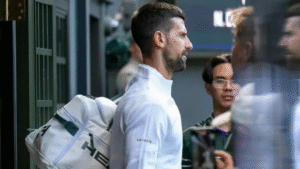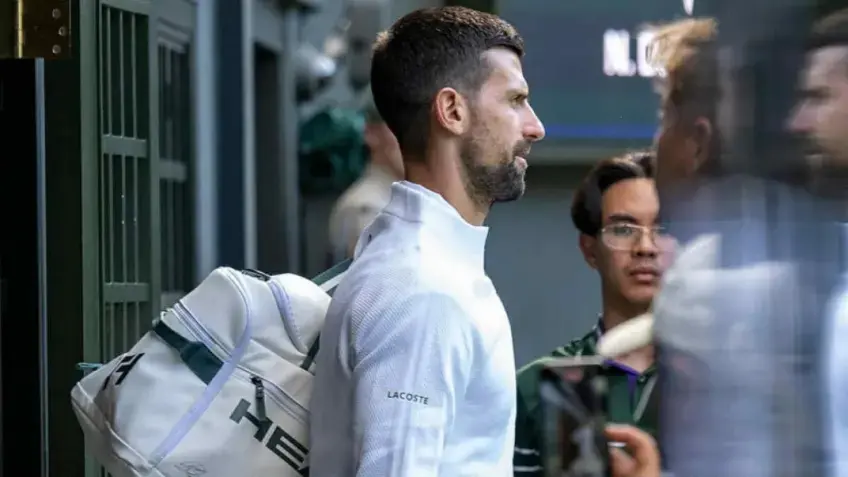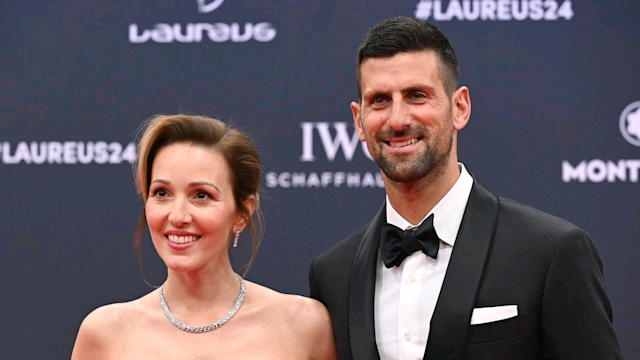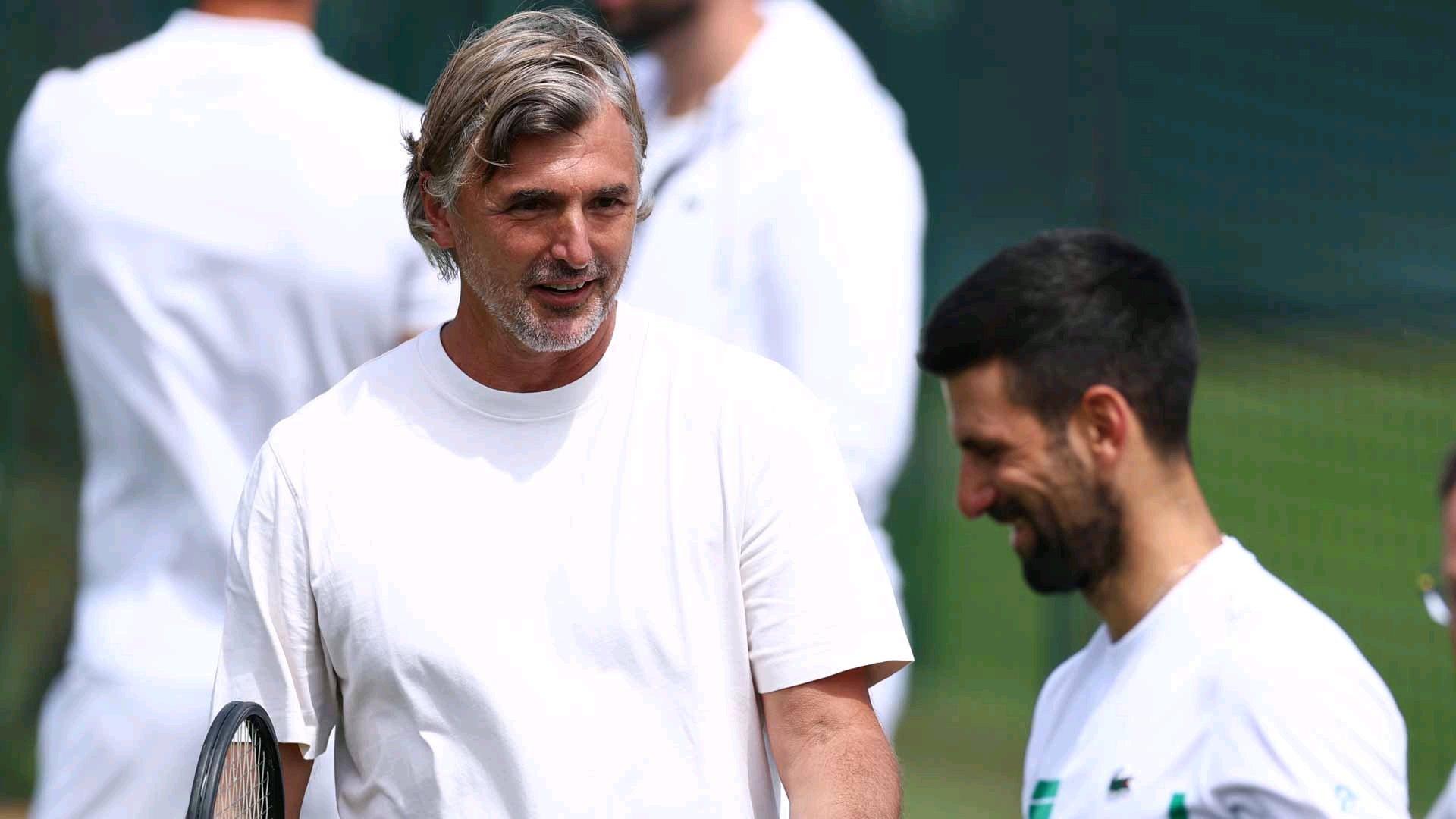**Former ATP Ace John Isner Discusses Novak Djokovic’s Frequent Injuries: An In-Depth Analysis**
In the world of professional tennis, few names evoke as much respect and admiration as Novak Djokovic. The Serbian maestro has redefined the sport with his exceptional talent, resilience, and relentless pursuit of excellence. However, even the greatest players are not immune to setbacks, and Djokovic’s career has seen its share of injuries and physical challenges.
Recently, former ATP ace John Isner, known for his towering stature and powerful game, offered insights into Djokovic’s frequent injuries, sparking widespread discussion among fans, analysts, and fellow players. This article delves into the nuances of Djokovic’s injury history, Isner’s perspectives, and the broader implications for professional tennis.

The Magnitude of Novak Djokovic’s Career
Before exploring the injury aspect, it’s essential to appreciate Djokovic’s extraordinary achievements:
– **Grand Slam Titles:** As of October 2023, Djokovic has won 24 Grand Slam singles titles, the most in men’s tennis history.
– **Weeks at No. 1:** He has spent over 390 weeks ranked as the world’s top player, a record-breaking achievement.
– **Career Longevity and Consistency:** Djokovic’s ability to maintain peak performance across over two decades is unprecedented.
Despite his phenomenal career, Djokovic’s journey has occasionally been hampered by injuries, raising questions about the physical toll of top-tier tennis.
Djokovic’s Injury History: An Overview
Over the years, Djokovic has encountered various injuries, including:
– **Elbow Problems:** Notably, Djokovic’s right elbow has been problematic at multiple points, leading to periods of rest and treatment.
– **Shoulder and Back Strains:** He has experienced shoulder strains and muscular issues, especially after intense matches or during grueling tournaments.
– **Infections and Illnesses:** Occasionally, Djokovic’s health setbacks have been linked to illnesses, such as COVID-19, which affected his play and training.
While injuries are common among elite athletes, Djokovic’s case has drawn particular scrutiny due to the frequency and impact on his career.
John Isner’s Perspective on Djokovic’s Injuries
In a recent interview, John Isner, who faced Djokovic multiple times on the ATP Tour, shared his insights:
> “Novak is arguably the most resilient player I’ve ever seen. But even he isn’t immune to the physical demands of this sport. His injuries, especially the elbow issues, seem to be a recurring theme. I think it’s a testament to how physically taxing tennis is at the highest level.”
Isner emphasized that Djokovic’s style of play—aggressive baseline game combined with incredible flexibility—puts immense strain on his body, particularly on the joints and muscles.
The Physical Demands of Modern Tennis
To understand the context of Djokovic’s injuries, one must appreciate the physical evolution of tennis:
– **Enhanced Athleticism:** Modern players train intensely, pushing the boundaries of strength, endurance, and agility.
– **Long Rallies and Intense Matches:** Matches now often feature extended rallies, demanding sustained physical effort.
– **Stringent Schedules:** With a packed calendar, players travel constantly, often recovering inadequately between tournaments.
Djokovic’s playing style—fusing defensive resilience with aggressive shot-making—exacts a significant toll on his body, increasing injury risk.
Factors Contributing to Djokovic’s Injuries
Several factors may contribute to Djokovic’s injury susceptibility:
1. **Playing Style:** His relentless baseline game, heavy topspin, and frequent use of high-impact shots stress his elbow and shoulder.
2. **Age and Wear:** As players age, recovery times increase, and wear and tear accumulate, making injuries more common or prolonged.
3. **Scheduling and Fatigue:** During peak seasons, intense match schedules and travel can lead to overtraining and insufficient recovery.
4. **Equipment and Technique:** Sometimes, subtle technical adjustments or equipment choices can influence injury risk.
The Role of Medical and Physiotherapy Support
Djokovic has invested heavily in his physical health, working with top physiotherapists, trainers, and medical experts. His recovery routines include:
– **Prehabilitation and Rehabilitation:** Targeted exercises to strengthen vulnerable areas.
– **Nutrition and Hydration:** Optimized diet plans to reduce inflammation and promote healing.
– **Mind-Body Practices:** Meditation and mental health support to cope with stress and fatigue.
Despite these measures, the physical nature of tennis means injuries can still occur, especially during high-stakes tournaments.
Impact of Injuries on Djokovic’s Performance and Career
Injuries have sometimes resulted in Djokovic withdrawing from tournaments or experiencing early exits, notably:
– **The 2022 Australian Open:** Djokovic withdrew due to vaccination mandates, but prior injuries had affected his preparation.
– **Injuries During Grand Slams:** Some setbacks during critical matches have been attributed to lingering physical issues.
However, Djokovic’s resilience and ability to adapt have allowed him to come back stronger each time. His injury management is often cited as a key factor in his longevity.
Comparing Djokovic’s Injury Experience with Peers
When juxtaposed with contemporaries like Rafael Nadal and Roger Federer:
– **Nadal:** Known for his intense training regimen and durability, but also for frequent knee and ankle injuries.
– **Federer:** Experienced a series of knee surgeries but maintained relatively fewer injuries in later stages.
Djokovic’s injury profile appears to be more centered around the elbow and upper body, possibly linked to his heavy topspin and aggressive play.
The Broader Implications for Tennis
Djokovic’s injury history highlights the need for:
– **Enhanced Player Welfare:** Incorporating more rest periods and monitoring to prevent overuse injuries.
– **Innovative Training Methods:** Employing biomechanics and sports science to reduce injury risk.
– **Tournament Scheduling Reforms:** Ensuring players have adequate recovery time amid a crowded calendar.
Future Outlook: Can Djokovic Maintain His Level?
Despite concerns about injuries, Djokovic’s dedication, medical support, and adaptive playing style suggest he can continue competing at the highest level. However, managing his physical health will be crucial for prolonging his illustrious career.
John Isner’s observations shed light on the physical toll that elite tennis exacts, even on the sport’s most resilient champions like Novak Djokovic. While injuries are an inevitable part of high-performance sports, Djokovic’s approach to injury management and recovery exemplifies professionalism and determination.
As tennis continues to evolve, the lessons from Djokovic’s injury experiences underscore the importance of prioritizing athlete health, adopting innovative training and recovery strategies, and fostering a sustainable environment where players can perform at their peak for years to come.
**References**
– ATP Tour Official Rankings and Stats
– Interviews with Novak Djokovic and John Isner
– Sports Science Journals on Tennis Injuries
– Medical Reports and Analysis on Tennis Player Injuries



